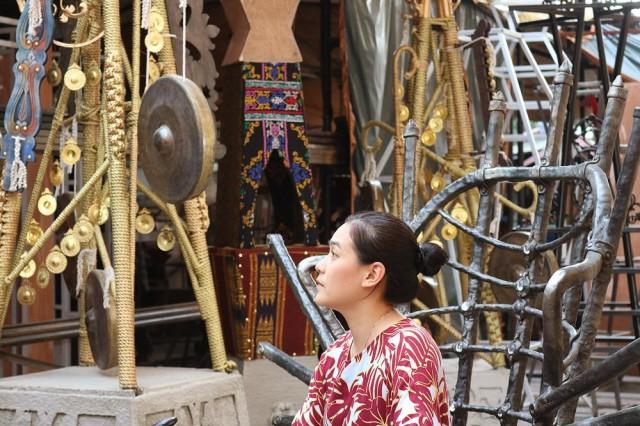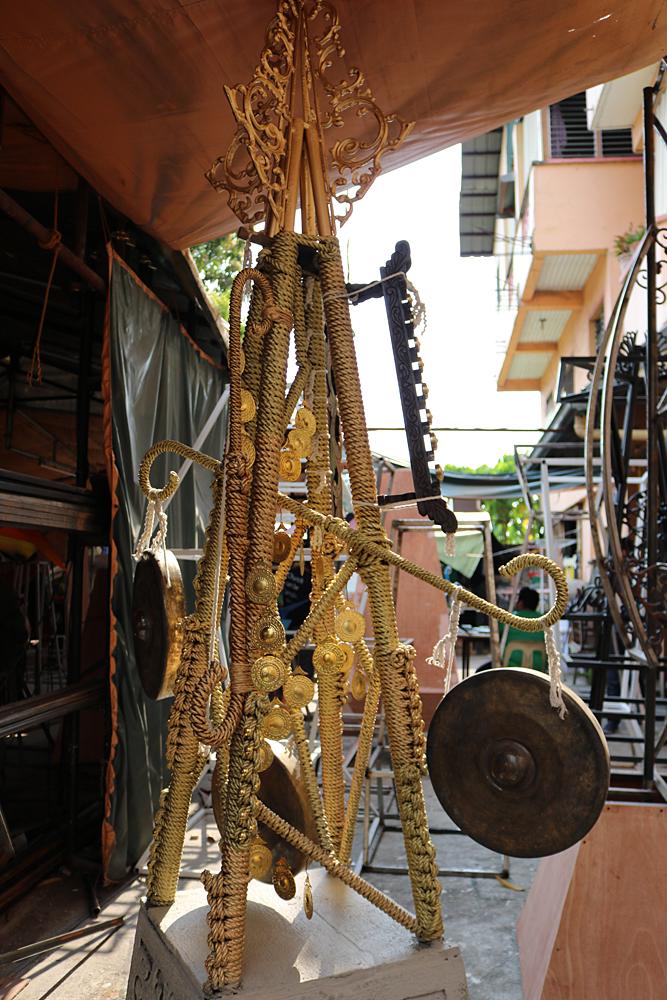Toym Imao, Lil Manahan transmit the richness of Moro culture through ‘Manara’
On May 3, a sacred structure will rise on the Ayala Museum plaza.

Toym Imao and Lilianna Manahan partnered with the Ayala Foundation to mount an interactive art exhibit inspired by Filipino Muslim culture and the minaret immediately emerged as the perfect talking point.
"We came up with the minaret in order to contain all these visual metaphors that is somehow shared by the region," Imao said during an exclusive tour around their work area on Thursday.
Five minarets will be installed at the plaza and people are welcome to interact with the space. Over the structure is a canopy of steel origami cranes in various colors as a symbol of convergence despite differences.
Minaret — "manara" in Arabic, which became the title of exhibit — translates to "lighthouse" and it is a fitting name for a structure where the call to prayer or adhan is made.
Read more: FIRST LOOK: Vibrant Moro art in focus at ‘Manara’
The two artists hope that their humble installation functions in a similar manner by inspiring reflection and conversation about an often neglected part of Filipino culture.
"All of these sculptures or towers become like beacons (where people) can come and gather," Imao further explained. "(Manara) is their chance to peek at what the region has to offer in terms of its visual culture, its faith, (and) its people."
Manahan took the project as an opportunity to learn more about the culture. She was fortunate enough to have gone to an integrated school where she played football with students whose backgrounds were different from hers — and as team, they were united in their goal to win together.
They were all aware of news about conflicts in different places, but all that mattered then was that they were teammates. In their collaboration, Manahan and Imao operated under the same idea.

"We're quite aware that there is a lot of really disturbing issues that are happening (involving) people from the Middle East and people from regions like Afghanistan and Pakistan — issues like terrorism, refugees. This affects a large majority of the Muslim population in these particular countries," Imao said. "With these kinds of crisis happening around the world, certain misconceptions arise."
Manahan added, "This exhibit is relevant because all of us go through conflict of some sort, whether it's small or big — individuals or little countries — so I think that maybe a different perspective on approaching the issues is something that all of us should probably look at. See if our approach is effective."

The exhibit, she said, seeks to show a bit of that fresher perspective and perhaps even shift the focus on the individual. For Manahan, "Manara" is a place where self-inquiry can prosper.
Imao has the same vision and he added that placing these Moro imagery in an open and inviting setting remedies lingering alienation between people from the same nation.
"Once we put out this imagery from a region that is often misquoted (or) misunderstood and probably have a certain historical stereotypes attached to it, it becomes a platform for inquiry...it becomes a place where discussion can be started ... where we can further explain beyond the headlines what the Muslim south has to offer within the entire context of Philippine society," he argued.
He added, "It becomes relevant because it also acknowledges the power of art as a very effective vehicle (for) sending messages across."
"Manara" pays homage to traditional Moro art, but Imao explains that they chose to add personal variations to the pillar's design to illustrate the flexibility of culture.
He explained, "It's a metaphorical message that despite 'yong mga sinauna nating paniniwala and ideas about the region, it is actually a region that's entering a new century. It's moving forward and it can be part of the modern world, it can be part of the development that is happening around the country."

Imao, son of National Artist of the Philippines for Sculpture Abdulmari Asia Imao, speaks of his father's influence on his own art with pride.
Both artists refuse to limit themselves, exploring and working with both traditional subjects and current social issues — all viewed under a broad definition of Philippine society, from the northernmost islands to the southern tips.
Moro culture is Filipino culture and "Manara" is a beacon that hopes to transmit this message.
"While we try to move forward, we should also be deeply rooted in the past and we try to pay an homage — we might have our own contemporary interpretation of how we would express love for country, but that love for country cannot just be rooted in the present. It also has to have deep respect for the past," Imao said.
A stroll through the exhibit is also a chance to transform into the minaret — a person as a place where ideas can prosper and be shared.
Imao continued, "We as responsible citizens, we as citizens who are sensitive to our neighbors, who accept that diversity, who work with that diversity in order to promote unity ... in a way we became the manara. We became the minarets, we became these towers within our particular communities."
"Manara" opens at the Ayala Museum plaza on May 3. — GMA News




